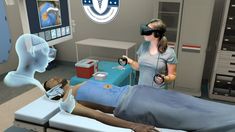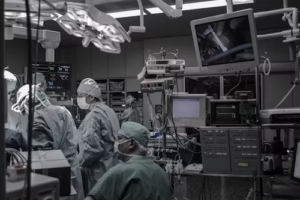Cardiology Coding Services: From Cath
Labs to E/M
Cardiology Coding

Cardiology Coding
Cardiology Coding
Cardiology Coding is one of the most complex and critical specialties in modern medicine. Every day, millions of people receive specialized care for cardiovascular diseases, which remain the leading cause of death in many parts of the world. But behind every electrocardiogram, coronary intervention, or clinical visit, there is a structured medical coding system that ensures proper billing, documentation, and analysis of each procedure. This is the essence of cardiology coding services.
Accurate coding not only facilitates reimbursement from insurers, but also enables healthcare organizations to improve their internal processes, comply with regulatory requirements, and provide better patient care. From complex cath lab procedures to clinical consultations requiring detailed medical judgment, coding acts as an invisible but vital bridge between care and administration.
What is cardiology coding?
Cardiology coding is the process of translating cardiac-related procedures, diagnoses, and medical services into standard codes such as ICD-10, CPT, and HCPCS. These codes allow for clear and consistent communication of what was done, why it was done, and how each service is clinically justified. This information is essential for:
- Accurate and efficient billing to insurers.
- Regulatory compliance with entities such as Medicare and Medicaid.
- Clinical and administrative statistics.
- Quality analysis and continuous improvement.
The heart of the hospital: Cath Labs

Cardiac catheterization laboratories (Cath Labs) are specialized centers where advanced procedures such as stenting, angioplasty, and hemodynamic studies are performed. Accurate coding of these procedures is critical, as they often involve multiple steps and expensive devices.
Common procedures:
- Coronary Angiography (CPT 93454 – 93461)
- Percutaneous Coronary Interventions (PCI) (CPT 92920 – 92944)
- Right/Left Heart Catheterization
- Intravascular Ultrasound (IVUS) y Fractional Flow Reserve (FFR)
- Pacemaker implants, defibrillators and biventricular devices
Challenges in Cath Lab coding
One of the biggest challenges is correctly documenting and coding procedures that can change in real time, depending on the patient’s condition. For example, a diagnostic procedure can turn into an unplanned therapeutic intervention during the same session. Coders must correctly interpret the medical narrative, differentiate between combined services, and appropriately use modifiers such as -59 or -26.
Evaluation and Management (E/M) in Cardiology

Beyond technical procedures, cardiologists perform detailed clinical evaluations that include symptom interpretation, medication adjustment, and complex clinical decisions. These services are recorded using E/M codes, which reflect the complexity of clinical thinking more than physical procedures.
E/M Service Levels:
- New patients (99202–99205)
- Established patients (99211–99215)
- Initial and follow-up hospital visits (99221–99233)
- Consultation Services (99242–99245)
- Intensive and critical care (99291–99292)
Recent changes:
Since 2021, E/M coding guidelines have focused on the complexity of medical decision making (MDM) and total care time. This reform allows physicians to more accurately document the cognitive effort required, reducing unnecessary testing bureaucracy.
Importance of specialized coders
Having specialized cardiology coders is not a luxury, but a necessity. Their specific experience allows them to properly interpret medical documentation and apply current regulations, avoiding costly errors. Furthermore, these experts can provide training to medical staff to improve the quality of documentation from the outset.
Miscoding not only affects revenue, but can also trigger audits, penalties, and loss of institutional reputation. A single error can have significant financial consequences, especially in high-cost procedures.
Real cases of impact
A 400-bed hospital faced monthly losses due to misuse of modifiers in Cath Lab procedures. After implementing specialized external coding, admissions increased by 23% and appeals decreased by 70%.
Private cardiology clinic: Had a 15% rejection rate on E/M claims. After undergoing auditing and training, the rate dropped to 3% in just two months.
Good practices
- Establish clear protocols for medical documentation.
- Train staff on the importance of clinical accuracy.
- Regular internal coding audits.
- Active collaboration between physicians and coders.
- Adoption of technological tools with artificial intelligence.
Future trends

- AI-powered predictive coding: Algorithms that suggest codes in real time based on clinical notes.
- Full EMR integration: Platforms that unify coding, documentation, and billing into a single system.
- Value-based models: incentives that reward results rather than volume of procedures.
How to Choose an Encoding Provider
| Criterion | Importance |
|---|---|
| Specialization | Improves accuracy |
| Certification (AAPC/AHIMA) | Quality assurance |
| Bilingual support | Ideal for diverse patients |
| HIPAA Security | Protect patient data |
| Continuous monitoring | Optimize results |
Conclusion
Medical coding in cardiology is an essential component that connects clinical excellence with administrative efficiency. Whether in the highly technical environments of catheterization laboratories or in the detailed clinical evaluation of E/M services, each code reflects a decision, an action, and an impact on a patient’s life.
Investing in professional coding services isn’t just a way to avoid errors: it’s a strategy to improve organizational performance, ensure regulatory compliance, and guarantee patient-centered care. In a constantly evolving environment, cardiology coding is more than an operational necessity; it’s a powerful tool for transformation and growth.



